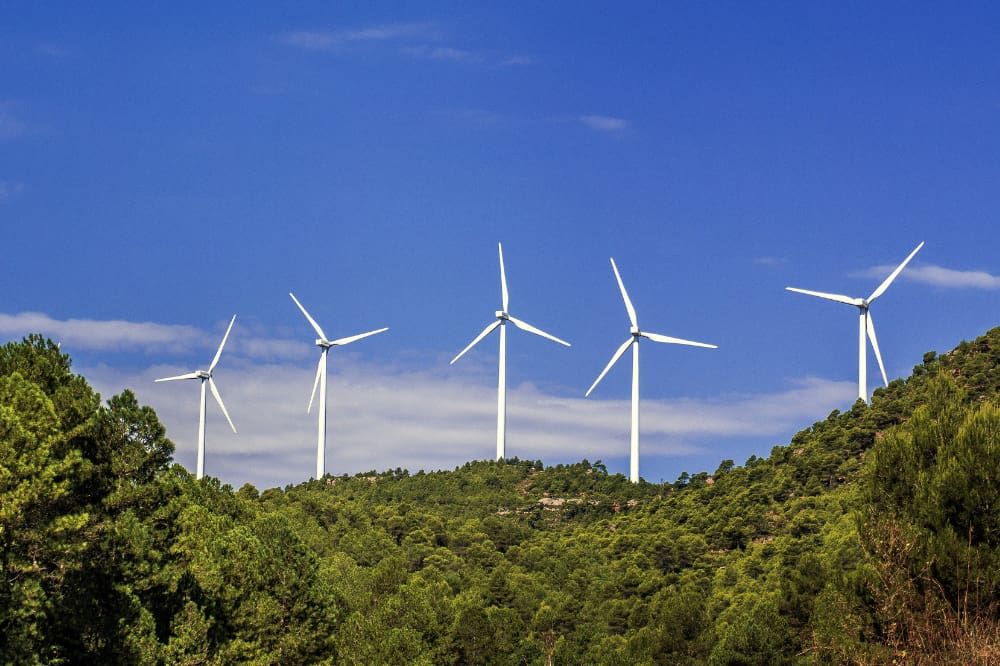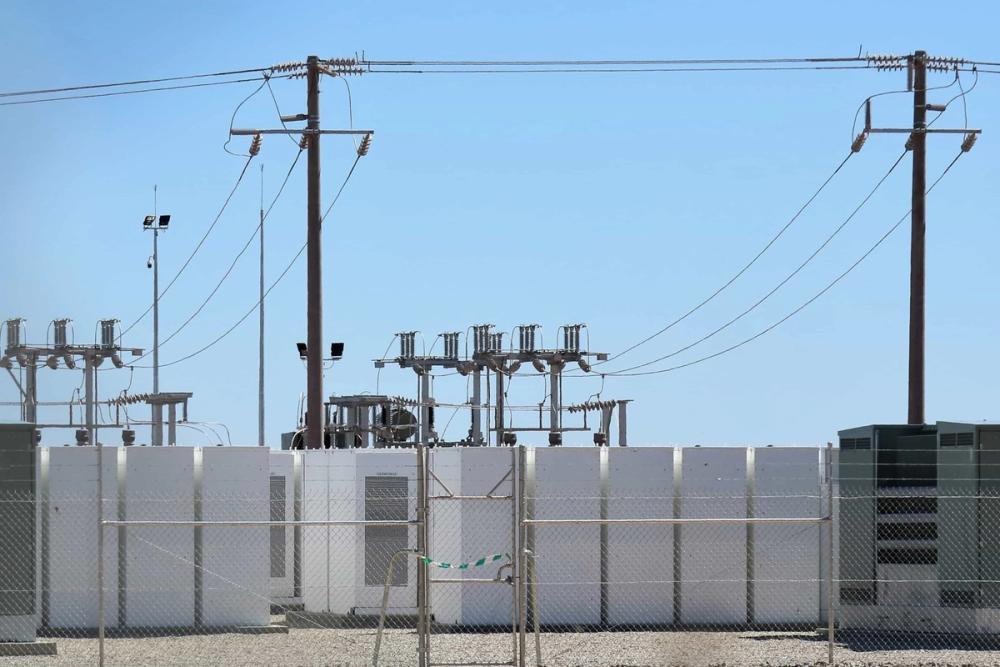Are we getting the most from Grid Connections?

Foreward
A lot of industry discussion has taken place recently on the availability of grid connections and the drive to bring these connection dates forward, all of this work is badly needed and should continue to be aggressively pursued but it is one part of the wider puzzle of creating a net-zero compliant electricity grid.
What however has been overlooked in the rush to improve connection dates is the ‘utilisation’ of the existing and proposed connections themselves and whether National Grid ESO or the local DNOs are getting enough ‘bang-for-their-buck’ in providing connections to renewable energy project developers such as Balance Power Projects (BPP).
This blog looks to explore whether untapped opportunities exist in maximising current and new connections as a way to improving both the connection dates and ultimate costs for the end-consumers as well as simply adding more and more grid connections.
Within this blog, ‘Export’ is defined as the delivery of electricity from a renewable energy generation or storage scheme to the national electricity grid with ‘Import’ meaning the reverse.
Executive Summary
Utilisation of some grid connections occupied by most current and near-term renewable energy generation and storage projects is likely to be below what should be possible and expected. As a result of this assertion, efforts should be made to explore, identify and implement as equitably as possible solutions that would provide better value for the end-consumer than simply adding more and more connections to the grid network.
This blog has identified some possible areas of investigation but ultimately any implementation of solutions that are designed to further exploit existing connections will have an impact on the current connection ecosystem and processes so attempts to mitigate and minimise unwanted side effects will be important. However, it is clear that getting the very best outcome for the end-consumer (ie lowest bills by reducing non-wholesale grid charges) may result in disappointment for other stakeholders which will need attention.
This work ties in nicely with a previous analysis by BPP which indicated that current grid connections should be optimised better with respect to the current Battery Energy Storage System (BESS) projects. That work indicated that available commercial support and models should try to encourage development of longer duration systems with 8h durations being the possible sweet spot between operational flexibility and minimising grid connection requirements.
What do you mean by ‘Utilisation’ in this context?
Utilisation in this context looks at the actual delivered exported electricity to the grid divided by the potential maximum exportable electricity over a one-year period. It in effect measures how much a connection is being exploited with a higher figure being considered better.
Traditional centralised power generation, and the associated transmission and distribution system, is based around the ability to change the rate that fuel is fed into an electricity generation process (eg steam boiler and turbine etc) in order to ramp up or down output on a 24/7 basis. For power stations that acted as baseload, such as nuclear which still plays that role today, this would give a utilisation figure of likely >90%. The move to integrate Variable Renewable Energy (VRE) generation into the system at the expense of fossil-fuelled dispatachable generation will by definition decrease the utilisation of a grid connection by introducing variability into the output.
Perhaps the most obvious demonstration of the implied reduction of connection utilisation can be seen with a solar PV system, simply due to the fact that it will only generate electricity during daylight hours rather than in a 24/7 continuous fashion.
If we were to arbitrarily assume that a 100MWDC solar farm in the UK was able to generate 1,000kWhAC/kWDC then the ‘utilisation’ of the connection will be approximately 12.5%. This assumes that the requested grid connection is set to 91.25MWAC which would be the approximate maximum output of an undegraded system over the lifetime of the system. The real utilisation number will slowly drop over time when degradation of the system is built into the calculations.
The utilisation figure will likely not increase much further with wind with the fact that wind outputs are typically much lower than the maximum due to the power output being related to the cube of wind speed (ie double the wind speed gives eight times the power). Other common technologies deployed in the UK today include BESS and based on the current duration (ratio between the capacity [MWh] and duty [MW]) of 2h that are typically operational in the UK today, the utilisation figure will only be around 11.7% based on a typical mean daily cycling of 1.5 cycles per day. However, the overall connection utilisation would increase to 26.0% if the charging of the BESS through grid import was factored in.
Utilisation is not really discussed at the moment, why is it important?
When we have such relatively low export utilisation figures, it gives a sense of perspective in how much the grid needs to expand in order to move to a net-zero compliant grid. Even a small increase in connection utilisation should reduce the need for new connections.
In the recent past, the relative availability of near-term grid connections meant that maximising the utilisation of these connections was never a real concern since there was a good pool of connection opportunities. However, with this pool of near-term opportunities effectively shrunk to zero and the lead time for a newly applied for connection being often later than 2033, new approaches to managing and optimising connections should be seriously considered.
To date, significant work has been undertaken to remove what have become known as ‘zombie’ projects, ie projects having a connection offer but are making no attempt to be constructed and become operational. This work is vital, but it only really represents the most obvious approach to the long connection date improvement quandary. Attempting to improve utilisation figures for existing and near-term connections can open up further opportunities and may even be more commercially cost effective to pursue and implement once the ‘easy’ win of removing ‘zombie’ projects has been completed.
The rest of this blog will look at some possible concepts that could be explored with the intent of maximising the utilisation of connections. Different strategies will be required depending on whether the connection is operational, no one-size-fits-all approach will work.
Existing and short-term new connections: How can we increase utilisation?
Existing connections with either solar PV, wind or very short duration (≤1h) BESS projects should be proactively encouraged to explore routes to push their connection utilisations figures upwards. The depth of the possible interventions are vast and the depth of any pursued intervention will need to be commercially assessed versus the likely resistance of asset owners to the ideas.
At the light-touch end of the scale, government and operational stakeholders should ask asset operators of existing connections to voluntarily produce and deliver business cases, primarily outlining the CapEx investment and any proposed subsidies required to underpin the investment, to increase the connection utilisation figures to pre-determined percentages (ie 20% - 50% in 5% increments).
At the more heavy-handed, interventionist end of the scale, government and operational stakeholders could compel through legislation the attainment of minimum utilisation figures, possibly ratcheting up year-on-year, under penalty of applying a ‘non-utilisation’ tax per MWh of inability to deliver high enough utilisations. This tax should be set at a high enough level to offset the equivalent grid improvements that need to be delivered through other means.
Independent of the extent of intervention deemed necessary to encourage movement, the end result should provide a stimulation of a new marketplace bringing together both asset operators of existing connections and renewable energy project developers. Partnerships between these two sets of stakeholders can help realise projects that can push up connection utilisations with the end-customer ultimately benefiting through more cost-effective grid investment.
The actual commercial arrangement between the two parties should not be pre-determined to help innovation of commercial models but at the core of any contract we would expect the developer to agree to pay a connection rental (ie £/kW/yr) to the asset operator for the right to use the connection with secondary technologies that compliment the primary technology on the connection.
A couple of connections type that would benefit most from this type of approach could be:
- An existing solar PV standalone projects with new BESS capability aligns for two reasons. The first is that the availability of the connection for the secondary BESS for trading would be adequately forecastable and secondly the two methods of revenue generation differ substantially enough to prevent operational issues. In revenue terms, when a solar PV system is generating at a higher load, intuitively a BESS is unlikely to want to export as prices will probably be lower and then the BESS will want to export there will likely be very little or possibly zero solar PV generation;
- A very short duration (≤1h) BESS system with additional BESS capacity [MWh] to increase duration (>2h). A very short duration system can only provide short-term relief in the event of high system demand, often a peak period will be in the region of 2-3 hours so there is extra potential to help the grid operator with supply which would increase the connection utilisation.
For the first option above, this approach may only work for the oldest existing connections. The reason for this is that solar PV connections may have much lower import duty [MW] relative to their export duty [MW] simply on the basis that solar PV systems do not need extensive import capability to function correctly. The import duty [MW] does not need to be as high as the export duty [MW] as there are longer periods available for a BESS to charge at a lower wholesale price compared to needing to export at a higher wholesale price.
One of the main obstacles to the second option would be understanding how any curtailment will be impacted with the Last-In-First-Out (LIFO) queues and the potential reduced opportunities for BESS systems towards the back of the queue who have fewer opportunities to access the optimal intra-day trading positions. An example of conflict could be if a 1h BESS project that is at the front of the LIFO queue expands to 4h, they could mop up the opportunities to charge and discharge during the best eight 30-minute trading periods rather than the best two 30-minute trading periods. This would disadvantage BESS projects further down the LIFO queue that would be pushed from being able to access the third best 30-minute trading periods to the ninth best 30-trading period. This specific example would severely impact intra-day trading with this BESS as peak periods may not last long enough.
The issue described above may not be such of an issue with older connections where the grid modelling that took place at the time of grid application was very simplistic and looked at a worse case scenario of the BESS being able to both fully import or export at any time of the year. However, this position may change as grid modelling of BESS becomes more sophisticated to align with real life performance and curtailment profiles are developed for assets further back in the LIFO queue. This may mean that future connection offers could enforce a maximum capacity [MWh] as well as duty [MW].
An alternative to the second option to increase utilisation figures but without installing extra BESS capacity [MWh] is for the grid to ask asset operators to consider in effect to increase the duration of the existing installed BESS by reducing the available duty [MW] within the connection agreement in return for a lump sum payment as compensation. As this approach would unlock extra connection duty [MW] at the supply points, this would more cheaply connect additional duty [MW] for renewable technologies with these savings being redeployed as the source of the lump sum payments to amenable asset operators.
Longer term new connections: How can we increase utilisation?
For connections that are further out, the network will have some more flexibility in how it approaches the problem as it can set new rules regarding future operational use of the connection. The most obvious option of employing this additional flexibility is to stipulate that minimum connection utilisations need to be met for a connection to be granted or an additional connection premium needs to be paid to compensate for under-utilisation.
The most probable resultant impacts of this mechanism will deliver either co-located projects (eg solar PV coupled with BESS etc) as standard with commercial advantages being sought through more and more innovative PV & BESS coupling strategies and sizing or longer duration BESS projects.
If government or operational stakeholders want to go further than this then they could have the option of attempting to realign the connection queue based on projects being designed with the highest connection utilisations being given priority. This would represent a substantial shift in how the connection queues are managed but with grid connections becoming an effective tradable commodity amongst the developer and investor communities, a new paradigm such as this could be worthwhile to obtain best value for money.
A compromise between the current system(s) and in effect tendering the connections (although based on utilisation as well as direct commercial considerations) that maximises equity and fairness could be to calculate a target utilisation figure for all future connections. Once this figure is known, the current queue can be approached offering developers the chance to protect their position if the utilisation target figure is met with the risk that they could be jumped if they refuse.
Do you have any other ideas regarding connections?
In a previous blog looking at whether renewable energy project developers were being encouraged to develop the right BESS to deliver a net-zero compliant grid, we concluded that there is a significant misalignment between the technical needs of a net-zero compliant grid and the commercial models and support available today. The main discrepancy between the commercial and the technical was that a rational renewable energy project developer would develop a 2h BESS project whereas ≥8h BESS projects were what were needed from a technical perspective.
The link goes to an Executive Summary of the report with four key takeaways with a link at the bottom to the complete report providing more detailed analysis behind the conclusions.



